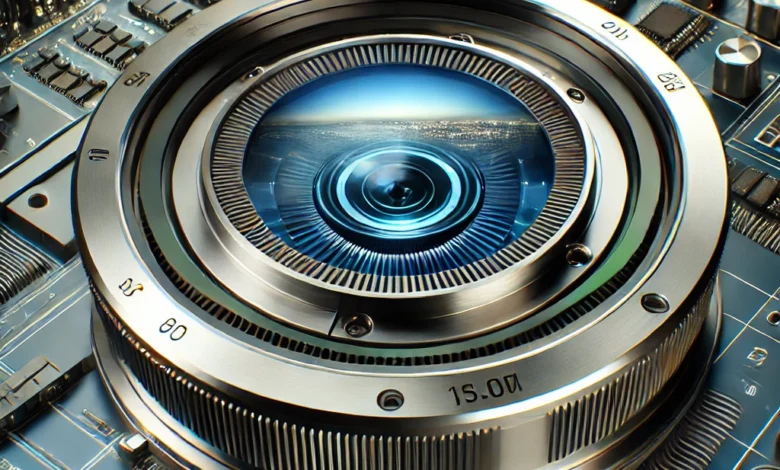Transform Your Photography with Advanced High-Resolution Camera Modules

Photography has always been a medium of visual storytelling, allowing people to capture moments, emotions, and scenes in ways that words simply cannot. But with the rise of advanced technology, photography has been taken to an entirely new level. One of the most revolutionary developments in recent years is the introduction of high-resolution camera modules, transforming how we see and document the world around us.
In the past, photographers had to rely on bulky equipment and tedious processes to achieve crisp and detailed images. Today, with compact, high-resolution camera modules becoming more accessible, both professionals and enthusiasts can take stunning images with unprecedented clarity. This technology has reshaped the boundaries of photography, pushing the limits of what’s possible. So, how exactly do these camera modules transform photography, and why should you consider upgrading your gear?
The Rise of High-Resolution Camera Modules
High-resolution camera modules have dramatically impacted modern photography, offering extraordinary levels of detail and sharpness. But what exactly makes them different? Essentially, a high-resolution camera module contains a sensor with millions of tiny pixels (often referred to as megapixels) that collect light and convert it into digital information. The higher the number of pixels, the more detail a camera can capture, producing a sharper, more defined image.
In today’s competitive photography landscape, these modules are no longer reserved for professionals. They are found in a wide range of devices, from digital cameras to smartphones, and are increasingly being used for everything from commercial photography to casual snapshots.
How High-Resolution Camera Modules Are Changing the Game
The impact of high-resolution camera modules on photography goes beyond just pixel count. These advanced modules are designed to deliver incredibly detailed images with greater dynamic range and color depth. This means richer tones, more accurate color reproduction, and better performance in challenging lighting conditions, such as low-light environments.
In addition to their high-performance image sensors, these modules also feature cutting-edge technology that helps reduce noise, particularly in dark scenes. By leveraging sophisticated algorithms and advanced optics, high-resolution camera modules can produce clean, clear images even in suboptimal lighting. The result? A level of detail that would have been unthinkable just a few years ago.

To buy high resolution camera module, visit https://www.optivistech.com/
Key Technologies Behind High-Resolution Camera Modules
Several key technologies are responsible for the exceptional performance of high-resolution camera modules. The first is advanced optics. Lenses today are designed with precision, using materials that minimize distortion and maximize sharpness across the entire image. This means photographers no longer have to worry about blurring at the edges of their shots.
Next comes the sensor technology itself. Sensors have become more sensitive, allowing for more light to be captured even in darker scenes. This sensitivity improves the camera’s dynamic range, allowing for richer colors and better details in both shadows and highlights.
Image processing algorithms have also evolved, with smarter software designed to optimize every pixel captured. This software enhances sharpness, adjusts exposure, and reduces noise to make sure that the image looks as good as possible.
Why You Should Invest in a High-Resolution Camera Module
If you’re a professional photographer, investing in a high-resolution camera module is an obvious choice. Whether you shoot landscapes, portraits, or product photography, you’ll benefit from the enhanced image quality. The ability to crop images without losing detail, print in large formats, and offer your clients the highest quality files possible can give you a competitive edge.
But even if you’re an amateur or hobbyist, a high-resolution camera module can make a huge difference. It allows you to experiment with different styles and techniques, giving you the freedom to explore photography more deeply. From vacation photos to family portraits, you’ll be able to capture every detail in stunning clarity.
Applications of High-Resolution Camera Modules
High-resolution camera modules shine in various photography genres. In landscape photography, for instance, every leaf, cloud, and distant mountain peak can be captured with intricate detail. This level of resolution also plays a crucial role in product photography, where crispness and precision are paramount for showcasing items to potential customers.
In portrait photography, a high-resolution camera module brings out the finest textures of skin, hair, and clothing. It enables photographers to retain rich detail in every aspect, making the subject appear more lifelike. Even in cinematography, these modules enhance video quality, making them ideal for filmmakers and content creators who seek visually stunning footage.
How to Make the Most of Your High-Resolution Camera Module
While these advanced modules can significantly improve your photos, getting the best out of them requires some know-how. First and foremost, mastering lighting is key. No matter how high the resolution, poor lighting can reduce the quality of your image. Proper lighting can make details stand out and colors pop.
Exposure is another important aspect. Underexposed images may lose details in the shadows, while overexposed photos may blow out the highlights. Balancing your exposure will help you achieve the best results from your high-resolution camera module.
Finally, post-processing software is an essential tool for refining your images. Programs that support high-resolution files can enhance sharpness, color accuracy, and overall image quality. Tools like noise reduction, contrast adjustments, and sharpening filters are vital for maintaining clarity.
Optimizing Settings for High-Resolution Performance
Getting the best performance out of your high-resolution camera module means tweaking your settings to match the scene you’re capturing. Start by selecting the highest resolution available on your camera. Keep your ISO low to avoid introducing noise, and experiment with different apertures to find the perfect balance of depth of field and sharpness.
When it comes to shutter speed, be mindful that higher resolutions capture more detail, meaning motion blur is more noticeable. Use a faster shutter speed to reduce the chances of blurring your images, especially in action shots or low-light environments.
Achieving Cinematic Videography with High-Resolution Camera Modules
High-resolution camera modules are not just for still photography—they can also significantly improve video quality. The increased resolution allows for crisper footage, richer colors, and more vibrant details. For filmmakers, this means greater flexibility in post-production, where you can crop, stabilize, or reframe shots without losing quality.
Additionally, shooting in higher resolution can give you more freedom to work with different aspect ratios and formats, allowing you to create a cinematic look that stands out.
The Future of Photography with High-Resolution Camera Modules
Looking ahead, high-resolution camera modules are only going to get more powerful. Innovations in sensor technology, lens materials, and image processing algorithms will continue to push the boundaries of what’s possible in photography. We can also expect more integration of AI-driven tools that enhance image quality in real time, helping photographers get the perfect shot with less effort.
As these advancements continue, the line between professional and consumer-grade equipment will blur, making high-resolution photography more accessible to everyone.
High-Resolution Camera Modules in Mobile Devices
One of the most exciting developments is the integration of high-resolution camera modules in mobile devices. Today’s smartphones are equipped with impressive cameras that rival professional setups, making it easier than ever to capture breathtaking images on the go.
With every new generation of devices, the technology becomes more advanced, enabling users to capture high-quality photos without needing bulky gear. The convenience of having a powerful camera in your pocket has revolutionized photography for casual users and professionals alike.
Environmental Impact of Advanced Camera Technologies
It’s important to consider the environmental impact of manufacturing and using advanced camera technologies. Many companies are taking steps to create more sustainable practices, using recycled materials and energy-efficient manufacturing processes. Moreover, high-resolution photography has been used in environmental conservation efforts, from documenting wildlife to capturing landscapes that need protection.
Practical Considerations Before Buying a High-Resolution Camera Module
Before investing in a high-resolution camera module, there are a few factors to consider. First, think about the sensor size. Larger sensors generally produce better image quality, especially in low light. Resolution is important, but it should be balanced with sensor performance to avoid issues like noise.
You’ll also want to ensure that the module is compatible with your existing equipment, such as lenses and accessories. Consider your budget and what you need the camera module for. High-resolution modules can be more expensive, but they also provide long-term value if you’re serious about photography.
Challenges of High-Resolution Photography
As with any technology, high-resolution photography comes with its challenges. One of the main issues is the sheer size of the files. Higher resolution means larger file sizes, which can quickly eat up your storage space. It’s important to have ample storage solutions, both on your device and in the cloud, to handle the influx of data.
Post-processing can also take longer with larger files, and you’ll need a powerful computer to handle editing without slowing down. While the results are worth the effort, it’s essential to be prepared for the additional demands of working with high-resolution images.
Conclusion
In summary, advanced high-resolution camera modules are transforming the world of photography. Whether you’re a professional photographer or an amateur enthusiast, investing in one of these modules can elevate your work, allowing you to capture images with stunning detail and clarity. By understanding the technology behind these modules and mastering the techniques to get the best results, you can unlock the full potential of your photography.



